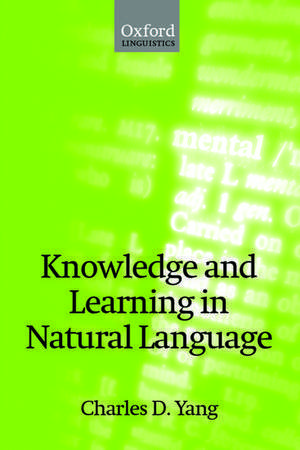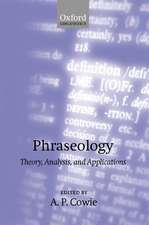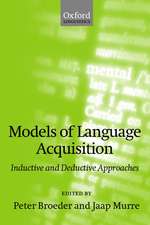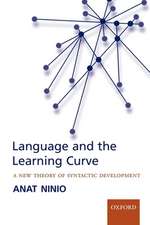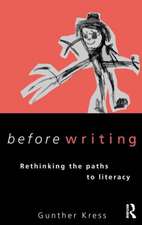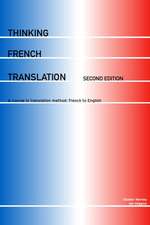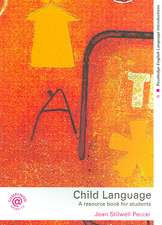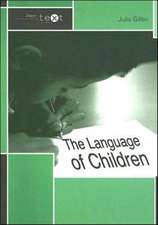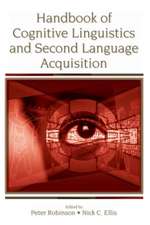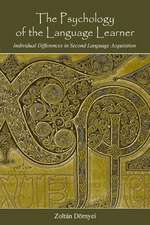Knowledge and Learning in Natural Language
Autor Charles D. Yangen Limba Engleză Paperback – 2 ian 2003
| Toate formatele și edițiile | Preț | Express |
|---|---|---|
| Paperback (1) | 331.16 lei 32-37 zile | |
| OUP OXFORD – 2 ian 2003 | 331.16 lei 32-37 zile | |
| Hardback (1) | 904.07 lei 32-37 zile | |
| OUP OXFORD – 2 ian 2003 | 904.07 lei 32-37 zile |
Preț: 331.16 lei
Preț vechi: 457.93 lei
-28% Nou
Puncte Express: 497
Preț estimativ în valută:
63.38€ • 65.92$ • 53.12£
63.38€ • 65.92$ • 53.12£
Carte tipărită la comandă
Livrare economică 03-08 martie
Preluare comenzi: 021 569.72.76
Specificații
ISBN-13: 9780199254156
ISBN-10: 019925415X
Pagini: 188
Ilustrații: numerous tables and figures
Dimensiuni: 156 x 234 x 14 mm
Greutate: 0.32 kg
Editura: OUP OXFORD
Colecția OUP Oxford
Locul publicării:Oxford, United Kingdom
ISBN-10: 019925415X
Pagini: 188
Ilustrații: numerous tables and figures
Dimensiuni: 156 x 234 x 14 mm
Greutate: 0.32 kg
Editura: OUP OXFORD
Colecția OUP Oxford
Locul publicării:Oxford, United Kingdom
Recenzii
Who would have thought that there could be a synthesis of mathematical learning theory, natural selection and Universal Grammar that is both readable and convincing? Charles Yang has succeeded, and in the process illuminates many phenomena in child language that are perplexing under alternative accounts.
According to Yang, many of today's irregular verbs are historical survivors of what were once systematic rules... By neglecting this historical evidence Pinker mistakenly supposes that the irregular cases have to be memorized on a case-by-case basis, whereas according to Yang what has to be memorized is which rule applies. Yang strengthens his argument by bringing in evidence from other languages. Yang argues that these irregular patterns are rule-based and that the child's task is not to memorize plurals on a word-by-word basis, but to figure out which rule applies, to which set the noun belongs. If Yang is right, and I think he is, then Pinker's irregulars are not illustrations of the words-and-rules thesis, but the less-general-rules-and-more-general-rules thesis.
Yang's carefully crafted and impressively argued study is a significant contribution to the exciting field of language acquisition, and cognitive growth more generally. He has shown how conceptions of 'universal grammar' can be integrated with precise ideas about learning/growth mechanisms within a variational model of language acquisition that yields sharp and well-confirmed predictions over quite an interesting range, with implications for language change as well. It is a substantial achievement, sure to become the basis for much fruitful inquiry and research.
According to Yang, many of today's irregular verbs are historical survivors of what were once systematic rules... By neglecting this historical evidence Pinker mistakenly supposes that the irregular cases have to be memorized on a case-by-case basis, whereas according to Yang what has to be memorized is which rule applies. Yang strengthens his argument by bringing in evidence from other languages. Yang argues that these irregular patterns are rule-based and that the child's task is not to memorize plurals on a word-by-word basis, but to figure out which rule applies, to which set the noun belongs. If Yang is right, and I think he is, then Pinker's irregulars are not illustrations of the words-and-rules thesis, but the less-general-rules-and-more-general-rules thesis.
Yang's carefully crafted and impressively argued study is a significant contribution to the exciting field of language acquisition, and cognitive growth more generally. He has shown how conceptions of 'universal grammar' can be integrated with precise ideas about learning/growth mechanisms within a variational model of language acquisition that yields sharp and well-confirmed predictions over quite an interesting range, with implications for language change as well. It is a substantial achievement, sure to become the basis for much fruitful inquiry and research.
Notă biografică
Charles Yang has been teaching computational linguistics and language acquisition at Yale since receiving his Ph.D. in computer science at MIT.
